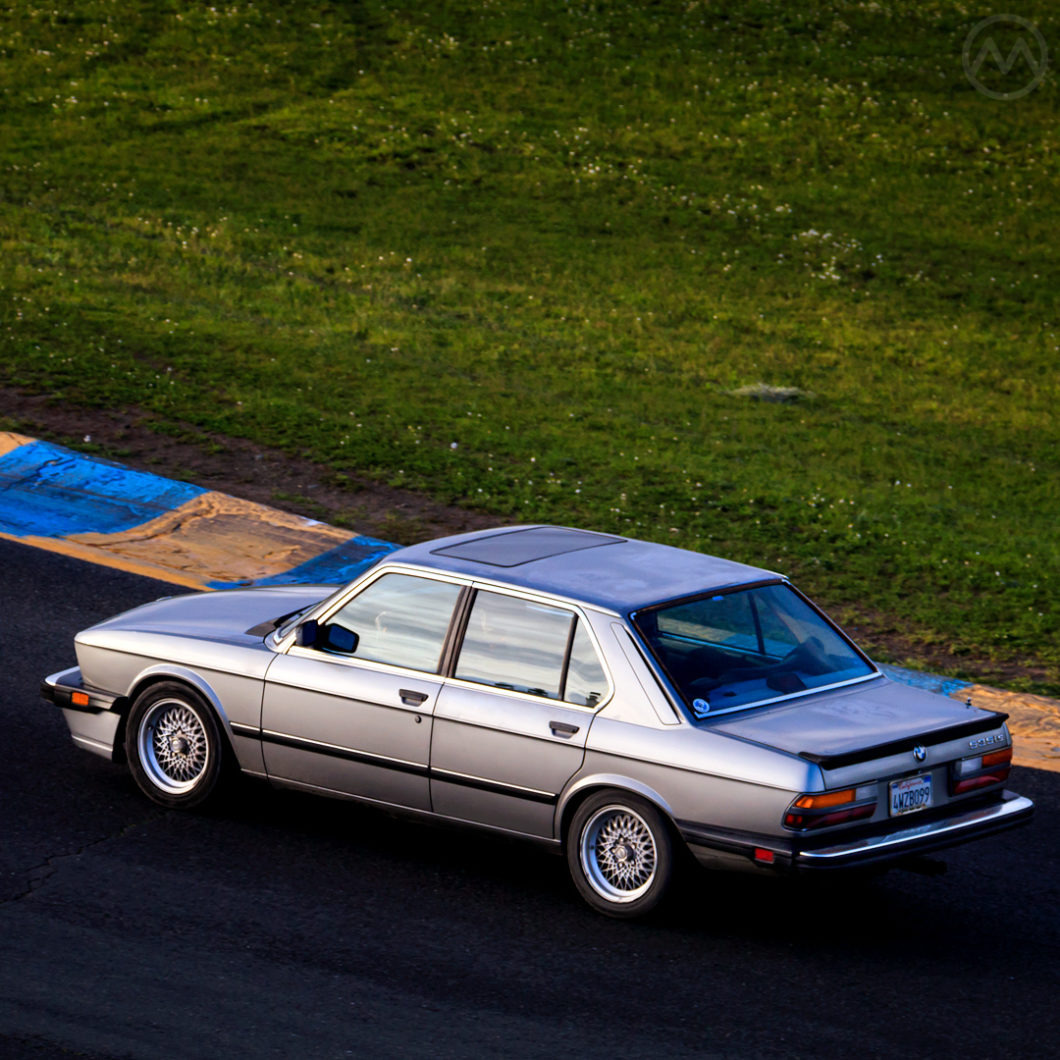The BMW 5-series first appeared in 1972, picking up the baton from the Neue Klasse sedans that had reinvented BMW in the 1960s. Like the Neue Klasse, that original 5, the E12, was also a car of firsts – it launched BMW’s modern naming scheme, it was the first BMW produced at the new Dingolfing plant, and it telegraphed style changes to come for the rest of the lineup.
By 1978 the 3, 6, and 7-series would all have arrived – a complete reinvention. When the time came to replace the E12, BMW chose evolution over revolution.
The 1980s 5er, the E28, came online in the summer of 1981 – Europe got them first, North America had to wait until December. The E28 was an evolution of the earlier car in every sense, but an extremely comprehensive update.
E12 to E28
The Paul Bracq-era styling of the E12 was freshened by Claus Luthe. Given a tight budget, Luthe’s team re-used wherever it could, but still created all new front and rear elements and a new interior.
Underneath, there were major changes to the suspension (informed by decisions made on the E23 7-series), electronics (many power features were added) and drivetrains and, significantly, provisions were made for anti-lock brakes – something few people had heard of in 1981.
While this generation would give birth to the first M5, it was the efficient ETA and Turbodiesel models that got the most attention during the development period. Perhaps not surprising given that the car was being engineered in the wake of the first fuel crisis and the second one struck before the car ever got to pre-production.
Today the E28 largely overshadows the E12 – in part due to timing and in part due to speed.
While the E12 helped in BMW’s 1970s’ conquest of the U.S., going from niche enthusiast player to a yuppie fave, the E28 arrived just as BMW’s popularity (in North America) exploded in the 1980s. In the era of the E12, BMW was selling about 20-30,000 cars a year in the United States. By 1984 it was 70,000, lifted by popular interest in the whole brand and in particular the then-new E30 and updated E28.
The longevity of the E28 was also ensured by its durability – it was more robust and somewhat better insulated from rust than the E12. For U.S. enthusiasts, it’s much easier to find an E28 as a result – bigger numbers, better survival.
North American Models
As with all BMWs of this era, North America got a limited range of motors – since this is a U.S. car, we won’t go into detail on the European range, but Europe got a much wider range on the bottom end, and higher specific outputs on the larger end.
Initially the U.S. got only the 121-hp ETA M20 528e, but eventually the U.S. was also treated to the 533i (’84-’84) and 535i (’85-’88) with M30 sixes (181/182 hp), the rarely-seen 524td (’85-’86), and for the 1988MY only, the M5. The M5 was the car every American BMW-phile lusted after at the time, but it took almost two years for the car to reach U.S. shores, and when it did, it had about 30 fewer hp than the Euro-spec car.

If there was one constant complaint about BMWs of this time from their fans, it was that U.S. cars almost always had lower outputs than Euro-spec ones, mainly due to emissions concerns. The M535i, a European model that looked and felt like an M5 but used the regular 535i engine, did not make it over. Instead, BMW North America offered the 535iS – basically the same vehicle in federalized trim, in 1987-88.
This 535iS, owned by Paval J. and seen at Sonoma Raceway, is one of those later cars.
By 1987 the E28 was winding down, and it’s successor, the very modern E34, arrived in November of that year. It did not come stateside immediately, however, and the 1988 5-series in the U.S. was still the E28.

